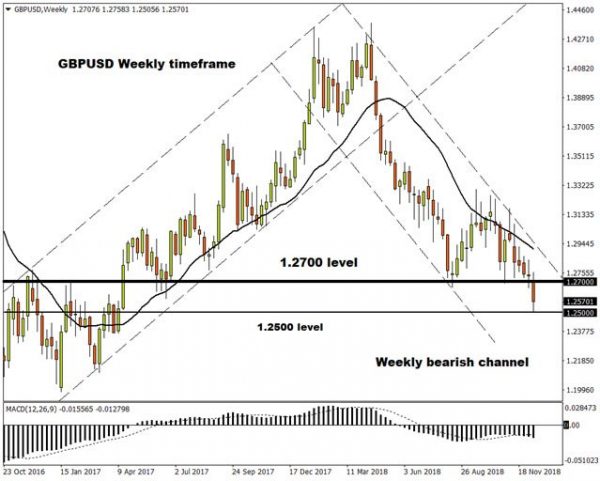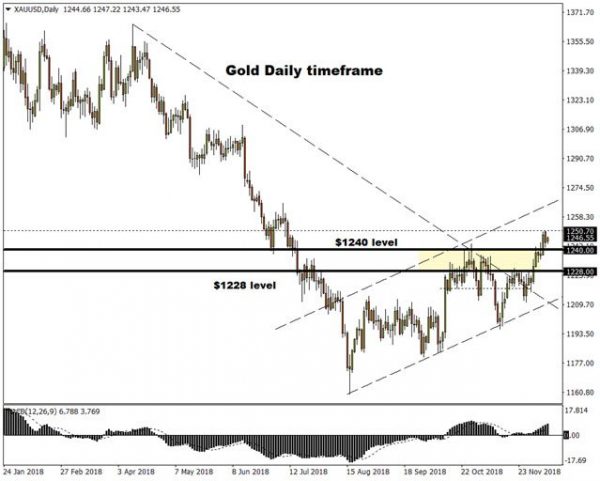Hopes that the Indian Rupee would continue its rebound from all-time lows experienced throughout 2018 on the back of sustained weakness in Oil prices have been rocked by news that respected Reserve Bank of India (RBI) Governor Urjit Patel has resigned from his position.
The departure of Patel from the RBI has not only heightened investor uncertainty over India, but more worryingly will probably encourage the return of speculation of potential political influence over central bank policy in India. With Patel’s sudden exit eroding investor confidence as India prepares for a general election next year, I would expect the Rupee to continue its tumble on this shocking development for a while yet.
Sterling seeks stability in face of Brexit setback
The main takeaway that is still dominating international headlines is the announcement that UK Prime Minister Theresa May has spectacularly pulled the key Brexit vote in Parliament just one day before it was scheduled.
The GBPUSD is trading near its lowest levels since April 2017 in response to this unexpected Brexit twist. If investors become more anxious that the United Kingdom is falling into either a no-deal Brexit or even worse, a disorderly Brexit trap, then a move to a 1.20’slow cannot be ruled out over the coming weeks. As the week progresses markets will be keeping a very close eye on whether May has the ability to renegotiate with Brussels in a bid to save the deal, if she will end up facing a leadership challenge, or the possibility of a second Brexit referendum. With the chaos in Westminster raising the likelihood of a no-deal Brexit scenario, the British Pound is in trouble.
Focusing on the technical picture, the GBPUSD is undeniably bearish on the daily and weekly charts. The sharp breakdown below 1.2700 has placed bears in a firm position of control with 1.2500 acting as the next significant point of interest.
Regional and emerging markets set to follow global indices
The theme of international political events overshadowing fluctuations in global markets is going to run the risk of regional and emerging markets following the trajectory of their global counterparts.
Renewed uncertainty over what exactly is going to happen next with Brexit combined with continued signs of political risk in France, alongside prolonged US-China trade tensions represents the perfect combination of a risk-off cocktail for investors.
All of these factors are weighing on risk appetite, where investor attraction towards taking on risk in their portfolio diminished early this week. Most major global markets, emerging market currencies and commodities like Oil all suffered falls on Monday, which is a broad indicator of risk aversion taking place.
Dollar buoyed by safe-haven demand
Market caution has sent investors sprinting to the Dollar which remains the go-to currency in times of uncertainty.
The Dollar Index is trading marginally above 97.10 as of writing and is likely to extend gains on safe-haven flows. However, with expectations mounting over the Fed taking a break on interest rates next year and soft economic data fanning concerns about US economic growth, Dollar bulls may tire more quickly than anticipated. In regards to the technical picture, the Dollar Index has the potential to hit 95.40 in the near term.
Commodity spotlight – Gold
Gold prices held steady this morning on prospects of the Fed taking a break on raising rates next year.
The outlook for the yellow metal this week will primarily hang on the Dollar’s performance. It will be a struggle for Gold prices to trade higher if risk aversion ends up boosting the Greenback. In regards to the technical picture, prices remain in an upward trend on the daily charts with support found at $1,240. Bulls have the chance to attack $1,250.70 and beyond as long as $1,240 proves to be a reliable support level.















